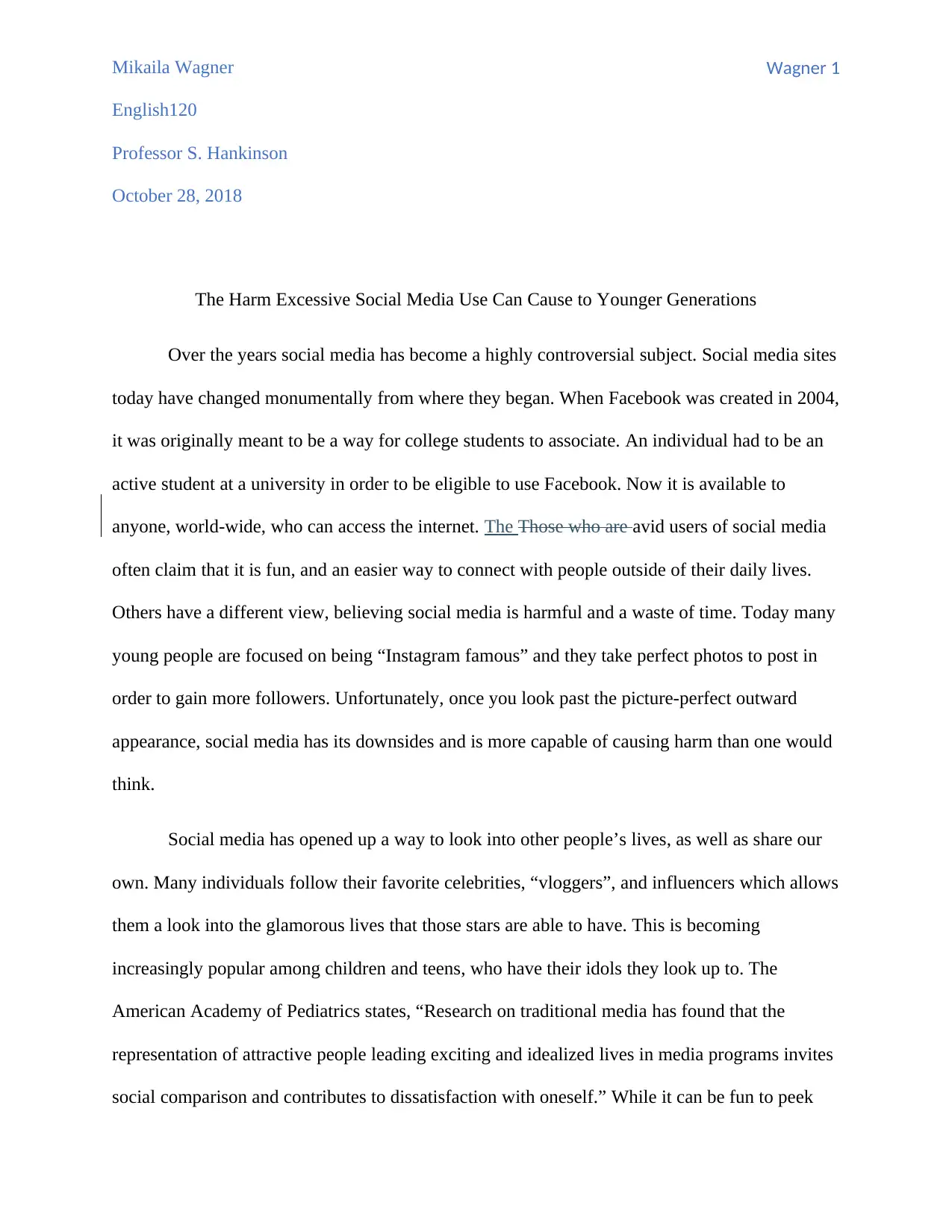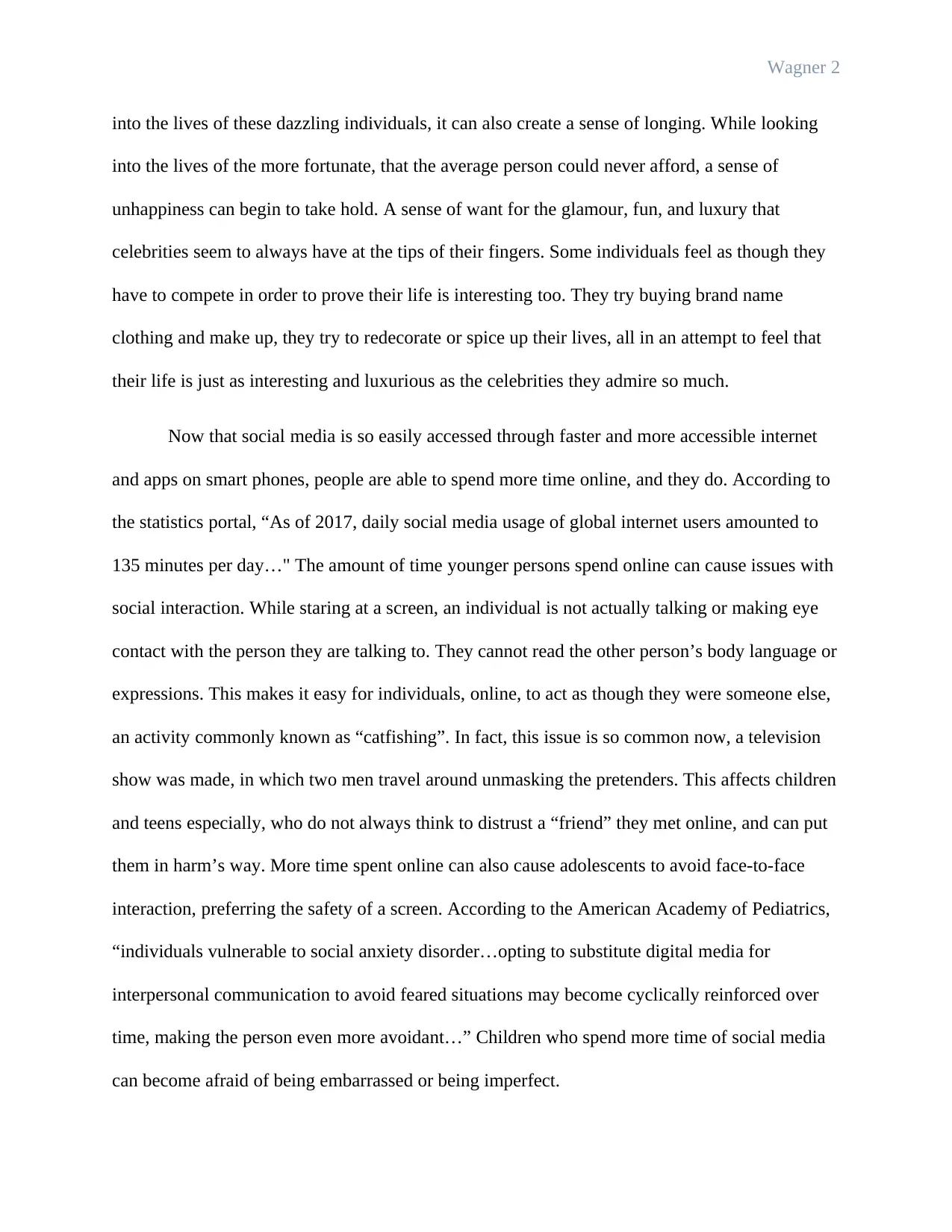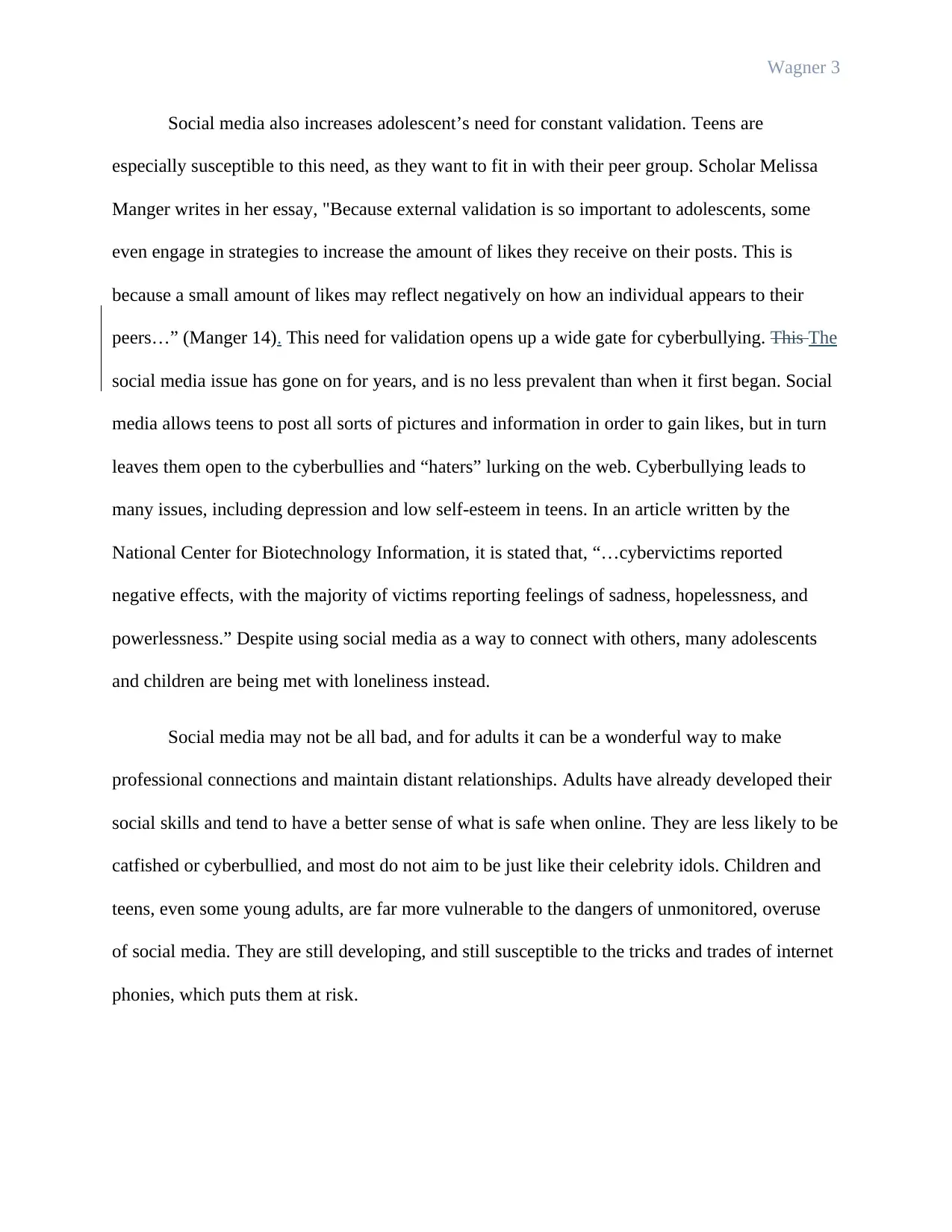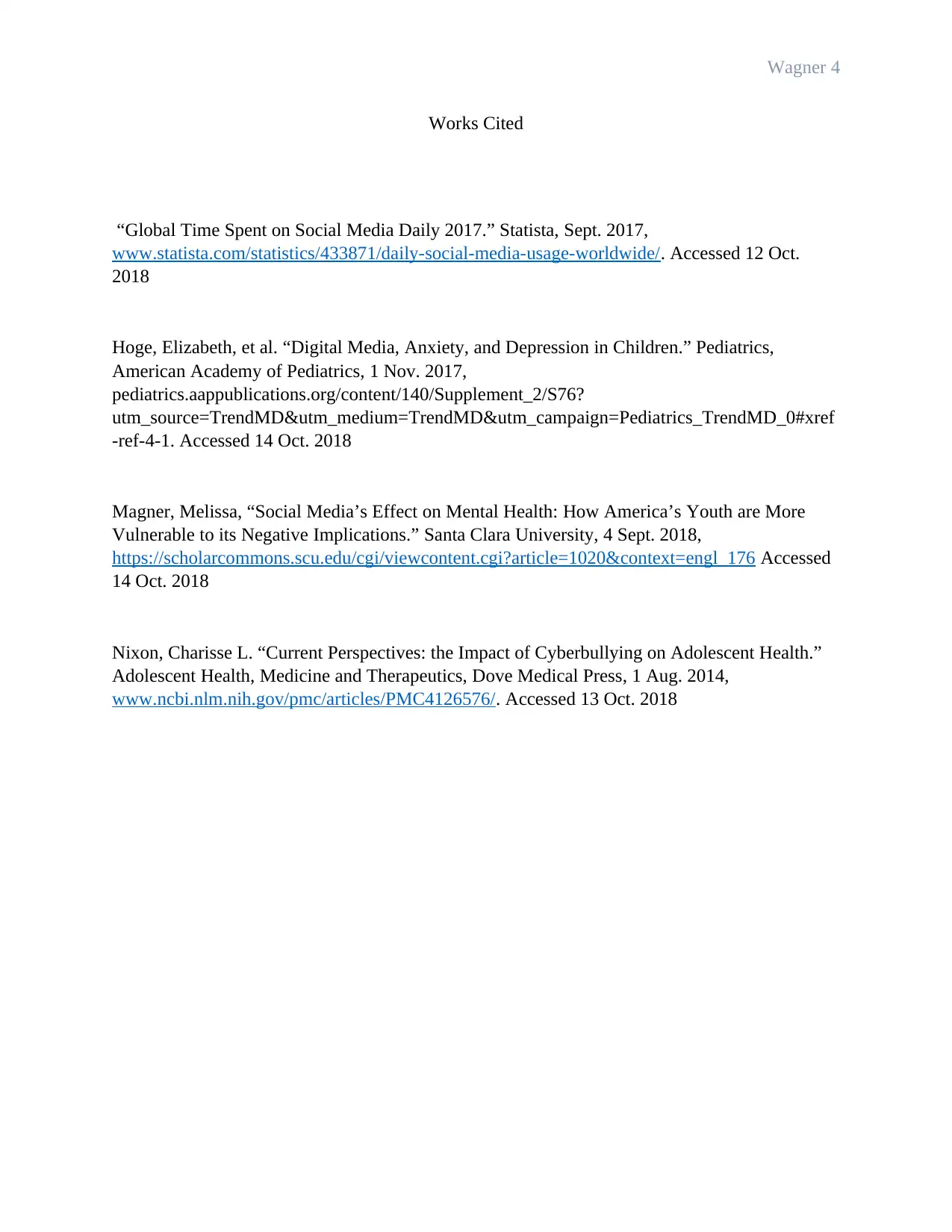English 120 Essay: Exploring the Harm of Social Media on Youth
VerifiedAdded on 2023/06/04
|4
|1237
|184
Essay
AI Summary
This essay examines the detrimental effects of excessive social media use on younger generations. It discusses how social media, initially designed for connection, has evolved into a platform that can cause harm through social comparison, decreased social interaction, and increased vulnerability to cyberbullying. The essay references research from the American Academy of Pediatrics and other scholars to highlight the negative impacts on mental health, including anxiety, depression, and the need for constant validation. While acknowledging the potential benefits of social media for adults, the essay emphasizes the heightened risks for children and teens who are still developing social skills and are more susceptible to online dangers. The author concludes that unmonitored social media use can be particularly harmful to this vulnerable demographic.
1 out of 4










![[object Object]](/_next/static/media/star-bottom.7253800d.svg)